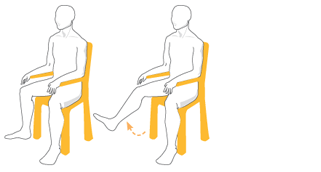Working with Mary Ann Wilson, RN, founder and host of the PBS program, "Sit and
Be Fit," the Coalition has developed an educational video and brochure that features
simple, low-impact movements to help increase blood circulation.
The program will include four different settings of movements and stretches that
can be done anywhere, anytime — standing, sitting or lying down (e.g. foot pumps,
ankle circles and rolls). Movement is only one way to help reduce DVT risk. Some
patients may require compression socks or medications such as anticoagulants â so
it is important to have a conversation with your healthcare professional.
The goal of the educational program is to use movement as one way to:
- Increase blood flow
- Raise awareness of DVT
- Assess personal risk of developing a DVT
- Encourage dialogue with a healthcare professional if at risk for DVT
When the muscles of the legs are inactive, blood can collect in the lower extremities,
increasing the risk for developing a DVT. However, when the muscles of the legs
are active, they help improve circulation by pushing the blood back to the heart.
Although certain individuals may be at an increased risk for developing DVT, it
can occur in almost anyone. So, itâs important to maintain regular mobility to sustain
proper blood circulation.
DVT Awareness In Motion Educational Tools
Chair Leg Raise
Below is an example of one of the simple low-impact movements featured within the
program that may help reduce the risk of DVT by encouraging blood circulation and
that can be done anywhere, anytime – standing, sitting or lying down.

Keeping your right leg straight slowly lift off the floor, hold for a moment, then
slowly bring it back down. Repeat the movement with your left leg.